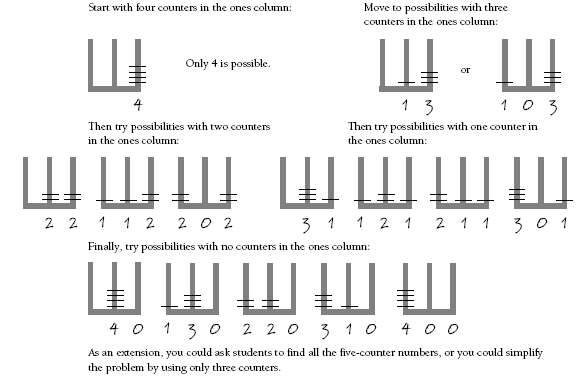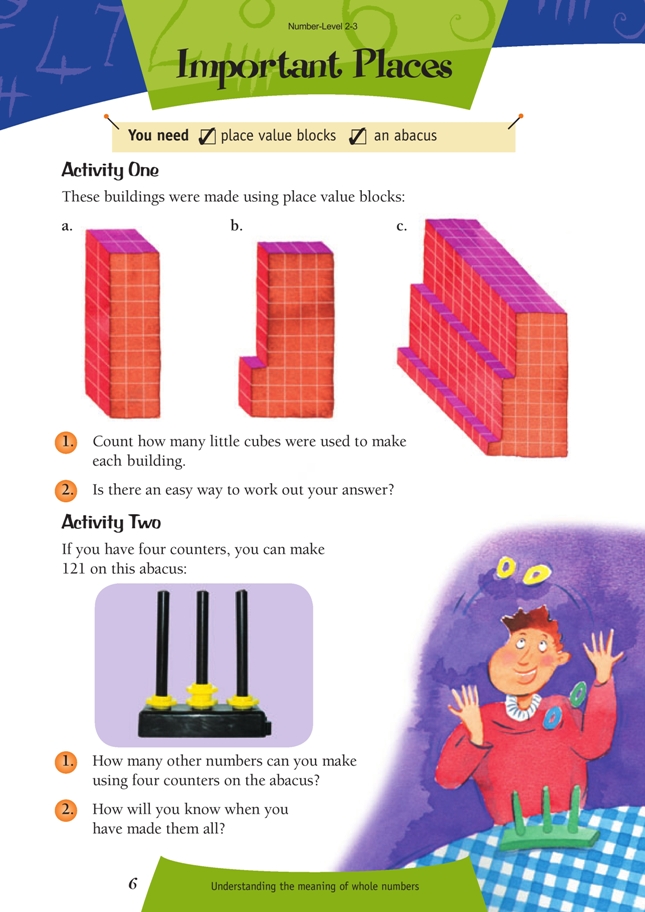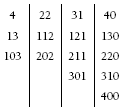Important Places
This is a level 2 number activity from the Figure It Out series. It relates to Stage 5 of the Number Framework.
A PDF of the student activity is included.
Click on the image to enlarge it. Click again to close. Download PDF (219 KB)
show understanding of place value using blocks and abacus
FIO, Level 2-3, Number, Important Places, page 6
An abacus
Activity One
This activity could be used to help students discover the structure of place value blocks by making buildings in the most efficient way possible. There are a number of ways to make each building, but using the largest unit for each section (flat, long, or single cube) is less time-consuming. Encourage students to use efficient strategies to count the number of small cubes required. For example, building b can be made using four longs (10 cubes) and three single cubes. Students may explain their counting as:
“That’s 10 plus 10 plus 10 plus 10 plus three … that’s 43,” or more efficiently, “Four 10s, that’s 40, plus three is 43.”
As an independent activity, you can ask students to make their own place value block building, draw it on isometric dot paper, and present it to a classmate. The classmate can build the model and work out the number of unit cubes it needs.
Activity Two
Students need to use a systematic strategy to find all the three-digit numbers that can be modelled with four counters. They may choose to draw the abacus pictures or record the numerals, knowing that the sum of the digits must always be four. A systematic strategy might proceed as follows:

Answers to Activities
Activity One
1. a. 60 b. 43 c. 510
2. Answers will vary. Students could count in tens. The fastest way to work out the area of the more complicated shapes (b and c) is to divide the building into regular block shapes and work out the area for each set. For example, with the building in c, work out the area (length, height, and width) for three sets of cubes, multiply each
set (10 x 11 x 4, 10 x 6 x 1, 10 x 1 x 1), and then add the three totals together (440 + 60 + 10 = 510).
Activity Two
1. Other numbers: 4, 13, 103, 22, 112, 202, 31, 211, 301, 40, 130, 220, 310, 400
2. Answers will vary. Students will need to use a system like this, which will make sure they have covered all the possibilities:

